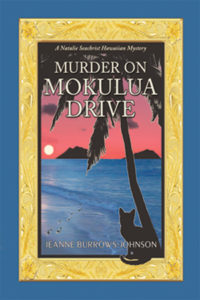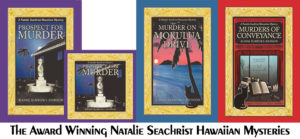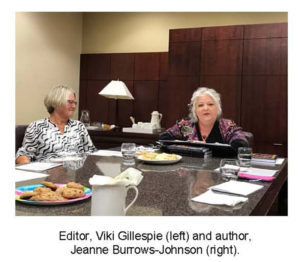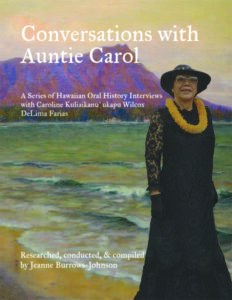
HAVE SENSE MEMORIES IMPACTED YOUR WRITING?
What are your earliest and favorite sense memories? Most of us think of the five physical senses as we are experiencing them. The toast looks and tastes all right, but it has a slightly burnt smell… I wish the kids would stop screaming, my ears are starting to hurt… I love this faux fabric, it almost feels like my cat’s fur…
THE CREATOR’S SENSORY PERCEPTION
As a writer, or other creative person, sensory perception can be an important element in preparing a stimulating picture via words or graphic images. We may not be aware of it, but the way an image or scent impacts us personally can greatly impact or work. One of the most effective devices for creating believable images is by consciously drawing on our memories. This is because referencing something we’ve encountered personally provides a depth of authenticity in whatever work we are undertaking.
THE TRUTH OF ONE’S EXPERIENCE
This does not mean that we have to reveal our personal circumstances in order to truthfully share a sensory experience. Of course, that may not be true if we are presenting a work that is a memoir or similar personal expression, for which we are obligated to reveal this aspect of our lives. The truth of our sensory experiences can be shared without revelation of the circumstances in which they occur. Isolating the experience from its original circumstances, can encourage us to revisit the specifics of what we saw, smelled, heard, touched, and/or tasted with greater accuracy.
For example, while we may wish to describe the beauty of a star-lit night from our honeymoon, we do not need to provide details of the circumstances in which we viewed it. Even when we need to describe something we have not experienced, it’s good to seek out the concrete memories of those who have. In describing Shanghai in the 1920’s for Prospect for Murder, I drew on images shared by people whose fascination with the city transcended the actual era in which they traveled. And despite their degree of positive or negative reactions, I was able to utilize their perspectives to provide images of the bustling streets and even the scents they encountered in their sojourns.
In Murders of Conveyance, the third book in the Natalie Seachrist Hawaiian Mysteries [Winner for Fiction Adventure-Drama in the 2019 New Mexico-Arizona Book Awards], my heroine overhears a conversation in Chinese from outside of the building in which she stands. I’m sure we can all think of times when we’ve accidentally overheard a conversation, whether in a language we speak or not. When I moved to Honolulu at the beginning of the 1970s, there were many occasions in which I heard languages I couldn’t understand, nor even identify. Because I needed my heroine to feel connected to foreign dialogue, I inserted phonetic sounds that allowed Natalie to guess the speakers might be referencing someone she knew.
STIMULATING VOCABULARY
Sometimes we are fortunate to be able to utilize vocabulary or pictures that effectively mimics the images we wish to share. I find the following words and phrases can bring clarity to a description, sometimes reaching beyond a single sense: wispy; screech; a snapping branch; wrinkled; razor’s edge; staccato; fragmented; shrunken; glassy; whispered; fiery.
The perception of other words often relies on those who read or hear them. Reference to an Upscale dining experience may arouse the taste and ambiance of a five-star restaurant to one person, and a fast-food joint to another. While the phrase Opulent jewelry signifies a strand of synthetic pearls with rhinestones to one reader, someone else may envision weighty crown jewels. Vintage clothing could generate a disco scene from the 1970s for a millennial, whereas someone my age may picture a flapper dress from the roaring twenties—the 1920’s that is. Similar variances can arise with an author or artist’s use of color and shape, as well as a composer’s insertion of pauses, changing rhythms, and escalating tones.
I’m fortunate that many of the images I wish to share in the O`ahu setting of the Natalie Seachrist mysteries practically write themselves: the sparkle and whooshing sound of incoming surf on a moonlit night; the stickiness of teriyaki sauce on a barbecued chicken thigh; the fresh fragrance of a flower lei, the stench of rotting plumeria blooms beneath an aging and neglected tree. But although I bring personal insight to such images, I must avoid cliché verbiage that will bore the veteran traveler.
YOUR TARGET AUDIENCE
This brings us to a brief discussion of one’s audience…one’s target market. If you’re working within a recognized genre of literature, art, or music, there may be standards to which the majority of your audience will expect you to adhere. If you are striking out on your own to create a variant or wholly new artistic expression, you can move in any direction you wish…keeping in mind that you will need to attract some degree of a following in order to achieve any degree of success.
Accordingly, I sprinkle snippets of pan-Pacific and world history across my mystery plot-lines. And while I present a fair number menu items within each book, I place actual recipes on my author website, rather than completely bogging down a story. As to the cast of characters, folio art framing page numbers, chapter aphorisms, and linguistically and historically detailed glossaries, the reader can choose to appreciate or ignore them…
Wishing you the best in your creative endeavors,
Jeanne Burrows-Johnson, author, consultant, and motivational speaker
Tips to enhancing your writing may be found in:
Empowering Your Words, February 2015
Creating Fictional Characters, March 2015
Sidestepping Writer’s Block, April 2015
Communicating with Every Sense, May 2015
Energizing Narrative Passages, September 2015
The Author Recycles, July 2017
Balancing Text & Space, February 2017
Book Series Adventures, April 2018
Drawing on Sense Memories, July 2018
To learn more about the award-winning Natalie Seachrist Hawaiian Mysteries, including Murders of Conveyance [Winner, Fiction Adventure-Drama, 2019 New Mexico-Arizona Book Awards] and other projects, please drop in at my author’s website JeanneBurrows-Johnson.com. You’ll even find Island Recipes that might inspire your culinary creativity.
For more ideas to strengthen your Wordpower© and branding, please visit: Imaginings Wordpower and Design Consultation.
Follow Me:
Amazon, Arizona Authors Association, Apple Books
Audible, Authors Den, Barnes and Noble, Blogarama, Book Bub
Cozy Mysteries-Unlimited, Facebook, Good Reads, Hometown Reads
Book sellers may contact book distributors such as:
Baker & Taylor, Follett, IPG, Ingram, Mackin, Midpoint, TitleWave











 Confronted By a Fantasia of Fonts?
Confronted By a Fantasia of Fonts?